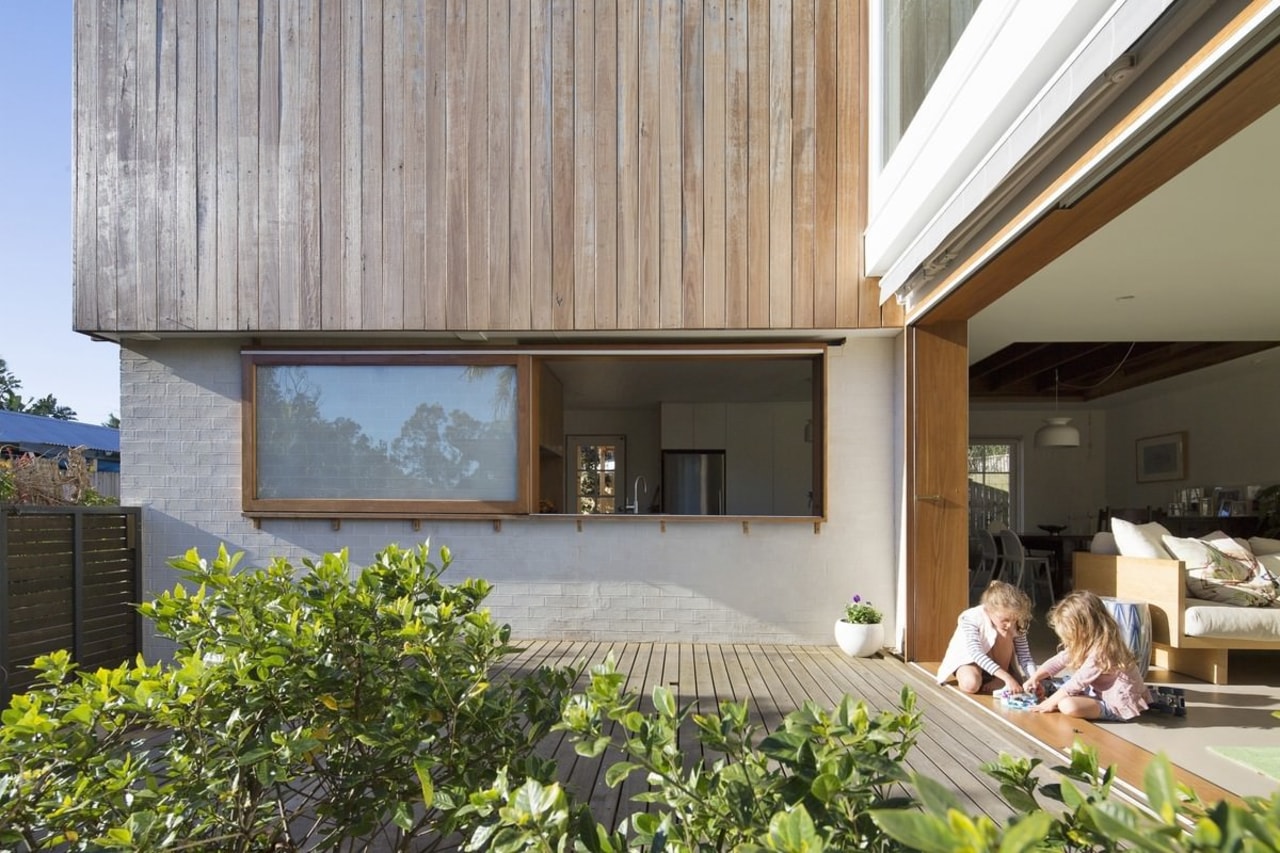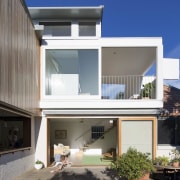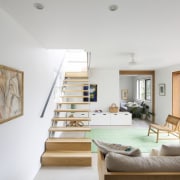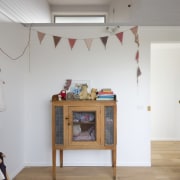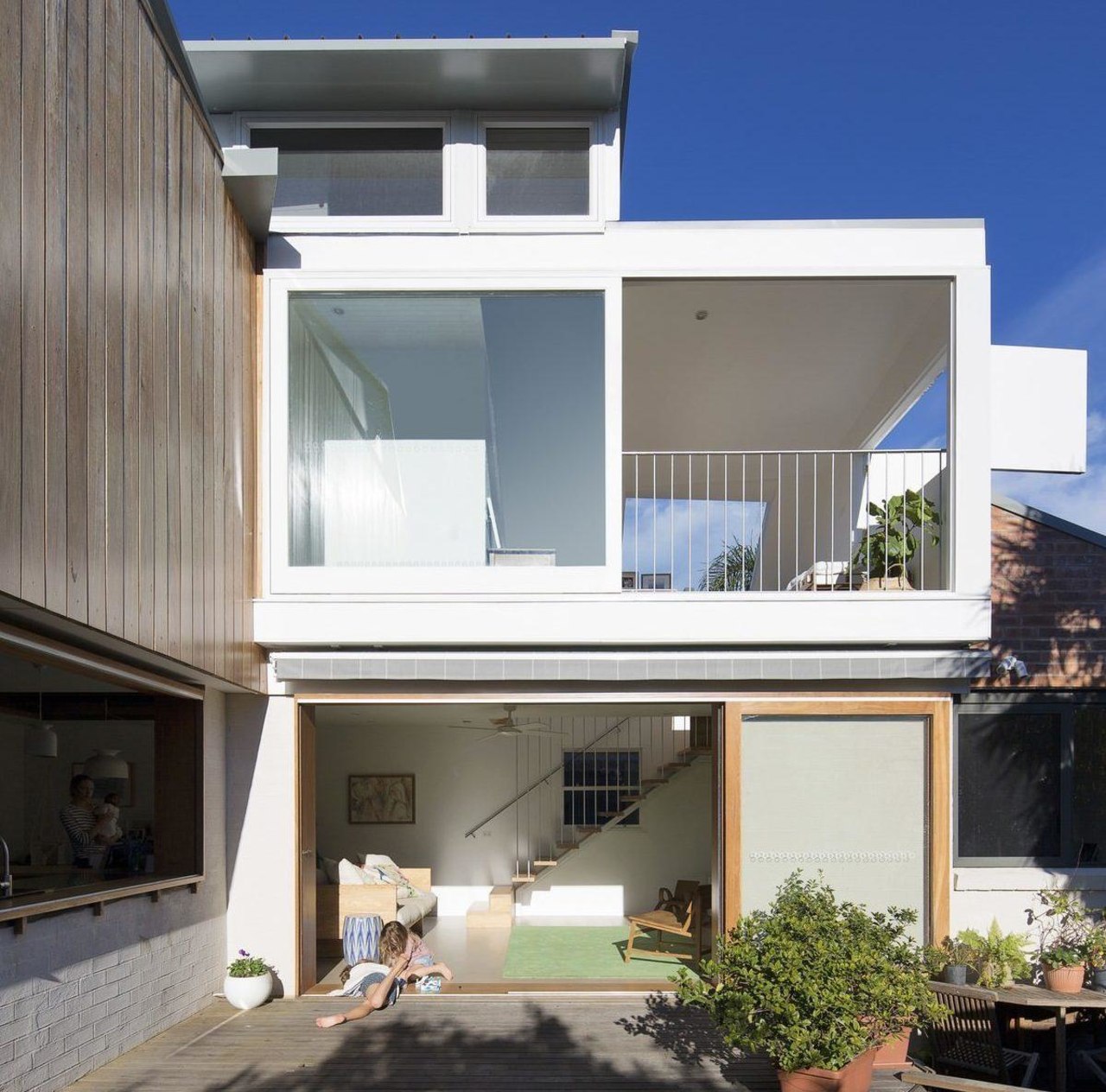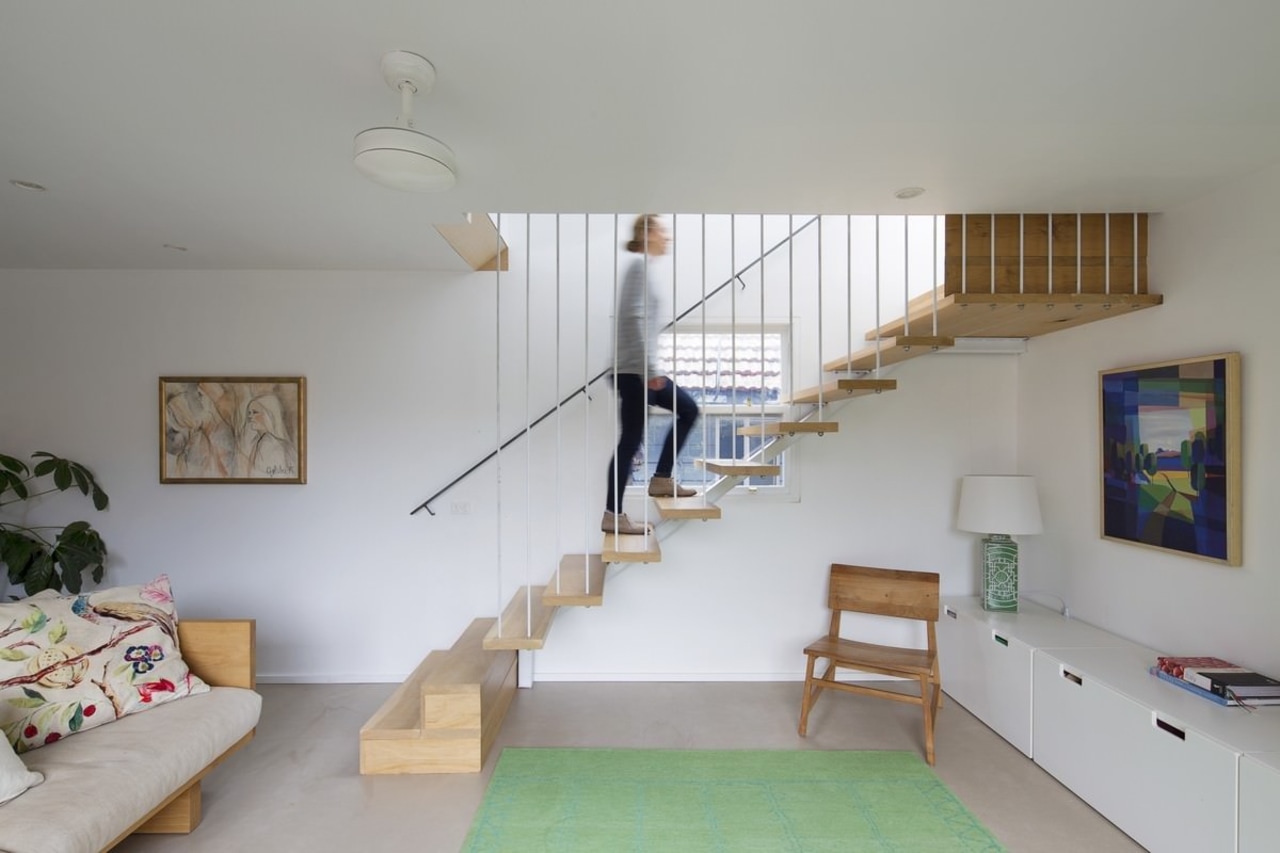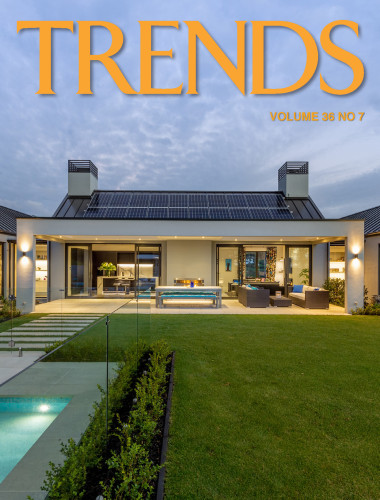From 1.5 bedroom cottage to light-filled home for a family of 6
This cottage was transformed into a modern beach house with a sophisticated interplay of natural materials and considered volumetric arrangement
Architect: Peter Ahern, Buck & Simple
From the architect:
Casa Crisp is the transformation of a modest brick veneer cottage into a light-filled, environmentally inclusive home for a young family of 6.
The original cottage has been transformed into a modern beach house with a sophisticated interplay of natural materials and considered volumetric arrangement. A rectilinear timber form now sits atop the original brick veneer podium keeping much of the existing dwelling intact.
The site is unique, in that it is a battle-axe lot with a tight 180sqm of usable land, however, the minimal outdoor area is compensated by a short walk to the sand at Warriewood Beach.
Previously having 1.5 bedrooms, the addition of two more bedrooms and two bathrooms makes it suitable for the current family of six. North facing and with eight neighbouring dwellings, the site offers surprising vistas from the new first floor addition of unobstructed natural features in multiple directions including glimpses of the ocean beyond.
The modest envelope ensured every nook has been considered and formed into functional space in order to create variation in the space and best utilise the site.
Blackbutt timber is the principal material for external areas with the first floor cladding, carport, and entry screening being made out of the locally sourced Australian hardwood. Blackbutt was a natural choice as it grows locally, is fast growing, is naturally termite resistant, and not susceptible to lyctus borers.
Lower floor windows are also made from blackbutt where they are easily reached for maintenance, whereas, upper floor windows use white aluminium frames to reflect heat and avoid maintenance of high level glazing.
The upper floor is clad in large sections of vertical blackbutt cladding forming a continuous rain screen which has been laid similar to decking boards and fully ventilated behind to allow heat to dissipate before entering the outer skin of the facade. Lower floors retain the existing brickwork finished in naturally heat reflective white paint.
The design utilises passive environmental systems and materials chosen in consideration of their environmental impact. Upstairs rooms utilise cross ventilation and high level operability to create a stack, or chimney effect, drawing cool air through the house in summer.
Priority has been given to the use of timber in the structure, cladding, windows and joinery to create a carbon bank, and on a small scale, contribute to the support of the plantation timber industry.
There is deliberately no artificial heating or cooling and temperature regulation is achieved with solar penetration onto thermal mass in winter and operable shading and ventilation in summer. External adjustable louvres and awnings are positioned over large areas of glazing, allowing the home to be “trimmed” to the weather conditions like a yacht.
A “timber on white” aesthetic is continued indoors with concrete, tiled or oak floors and timber details accentuated by white walls creating a clean, robust, relaxed coastal environment.
It is an ambitious goal to house a family of 6 in a 140sqm home, however, with attention given to the social dynamic and quality and variation of the spaces within, Casa Crisp is up to the challenge.
Story by: Trends
Home kitchen bathroom commercial design
Trends 19-08
Let’s be frank, the more design inspiration you take on board the better informed your own project decisions will be – t...
Read More